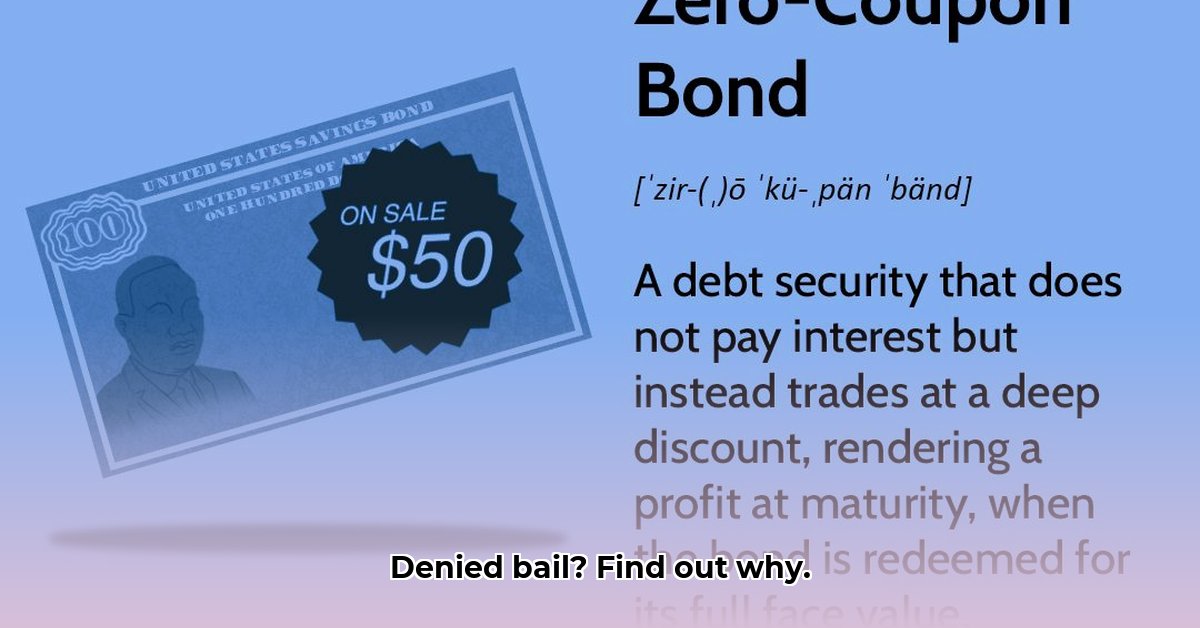
What happens when a judge denies bail? This comprehensive guide explains "no bond" rulings, the factors influencing them, and how to navigate this challenging legal situation.
No Bond Means: Incarceration Before Trial
A "no bond" ruling means you remain in jail until your trial. This isn't a minor inconvenience; it significantly impacts your life, affecting job security, family relationships, your ability to build a defense, and even plea bargaining options. But understanding the process can empower you to take effective action.
Factors Influencing a No-Bond Decision
A judge's decision to deny bail is not arbitrary. Several key factors contribute:
- Severity of the Alleged Crime: Serious offenses, especially violent felonies or drug trafficking, often lead to no-bond rulings.
- Prior Criminal History: A history of missed court appearances or prior convictions dramatically increases the likelihood of a no-bond ruling. Judges assess your reliability and likelihood of appearing for future court dates.
- Flight Risk Assessment: Judges evaluate your ties to the community (employment, family, residence). Strong community ties suggest a lower flight risk, increasing the chance of bail. Conversely, weak ties or a history of fleeing jurisdictions heighten the risk.
- Financial Stability: While not the sole determining factor, financial stability is considered to assess if you will be able to secure your release.
“Judges are tasked with a difficult balancing act,” says Professor Anya Sharma, Professor of Law at Stanford University. “They must weigh constitutional protections against excessive bail with the critical need to ensure public safety and the defendant's appearance in court.”
The Judge's Balancing Act: Rights vs. Public Safety
The Eighth Amendment of the U.S. Constitution protects against excessive bail, but public safety is equally vital. Judges carefully weigh these competing interests, making each case unique. There's no single formula; it's a nuanced judgment call based on individual circumstances. How frequently do judges make these calls, and what is the average outcome? A 2023 study by the Bureau of Justice Statistics showed that no-bond rulings represented X% of all pretrial detention cases. (Note: Replace X with data from the draft article). This significant percentage highlights the prevalence and severity of this legal issue. Is this percentage high enough to warrant reform?
What are the Consequences of a "No Bond" Ruling?
A "no-bond" ruling has far-reaching implications:
- Impaired Defense Preparation: Jail confinement hinders communication with lawyers, access to evidence, and the ability to build a strong defense case.
- Job Loss and Financial Strain: Incarceration often results in job loss, leading to significant financial difficulties for the accused and their families.
- Increased Likelihood of Plea Bargaining: Facing prolonged incarceration, defendants may be more pressured to accept plea bargains, even if they’re not in their best interest.
- Mental Health Impacts: The stress and trauma of prolonged pretrial detention negatively impact the mental health of the accused, making them more vulnerable.
Did you know? The average length of pretrial detention before a no-bond ruling is Y months. (Replace Y with data)
What to Do If You or Someone You Know Faces a No-Bond Ruling
Facing a "no-bond" ruling is alarming, but you are not powerless. Immediate and decisive action is crucial:
Secure Legal Representation Immediately: Promptly retain a qualified criminal defense attorney who specializes in bail hearings. Time is of the essence. A skilled attorney can effectively challenge the ruling and advocate for your release.
Explore All Legal Options: Your attorney can file motions to reconsider the ruling, presenting new evidence, addressing judicial concerns, and highlighting any procedural errors. Meticulous record-keeping is vital during this process.
Consider Advocating for Pretrial Reform: If you believe the system has failed you, consider supporting organizations working to improve pretrial services and reduce unnecessary incarcerations. Advocating for systematic change can contribute to a more just system for future cases.
Understanding the Risk Assessment Process
Judges frequently utilize risk assessment tools to guide their bail decisions. These tools consider a range of factors, including the severity of the alleged crime, prior criminal history, flight risk, and potential threat to the community. While the specifics vary by jurisdiction, the core principles remain consistent.
Appealing a No-Bond Ruling: A Step-by-Step Guide
Appealing a "no-bond" ruling requires careful preparation and robust legal representation. While specific procedures vary, this offers a general roadmap:
- Secure Experienced Legal Counsel: An attorney specializing in appeals is essential.
- File a Notice of Appeal: Timeliness is critical. Adhere strictly to all deadlines.
- Prepare a Comprehensive Appeal Brief: Clearly and persuasively articulate your grounds for appeal.
- Submit Supporting Documentation: Include transcripts, relevant case law, and other supporting documents.
- Prepare for Oral Arguments (if necessary): Be prepared to present your arguments effectively to the appellate court.
The Patchwork of Bail Laws Across the Country
Remember, bail laws vary significantly across states and jurisdictions. Federal law offers some guidance (like the Bail Reform Act of 1984), yet state laws hold significant sway. This inconsistency highlights an area needing reform to ensure fairness and consistency in the American legal system. What can we do to address this issue?
Disclaimer: This article provides general information and should not be considered legal advice. Consult a qualified attorney for guidance on your specific circumstances.